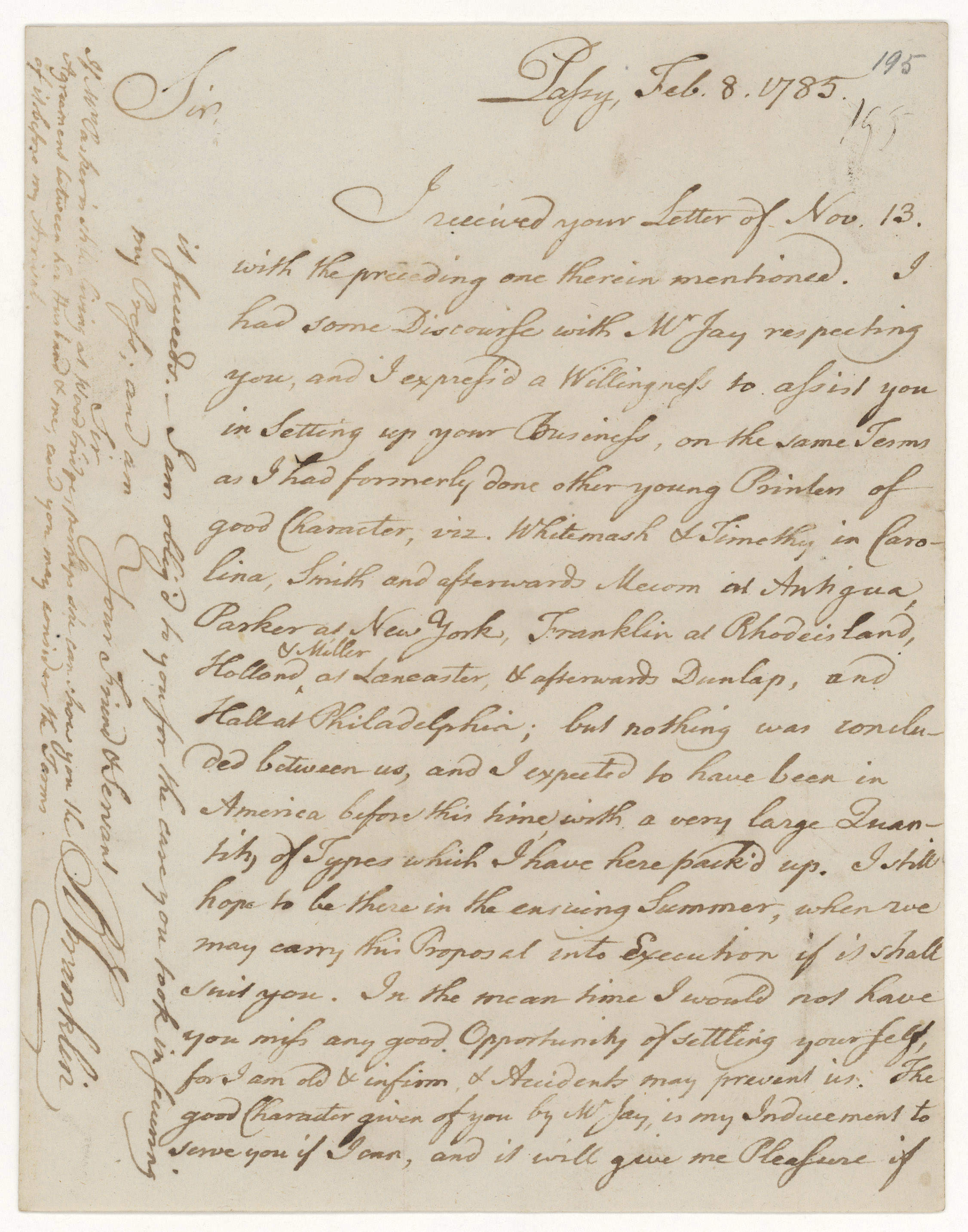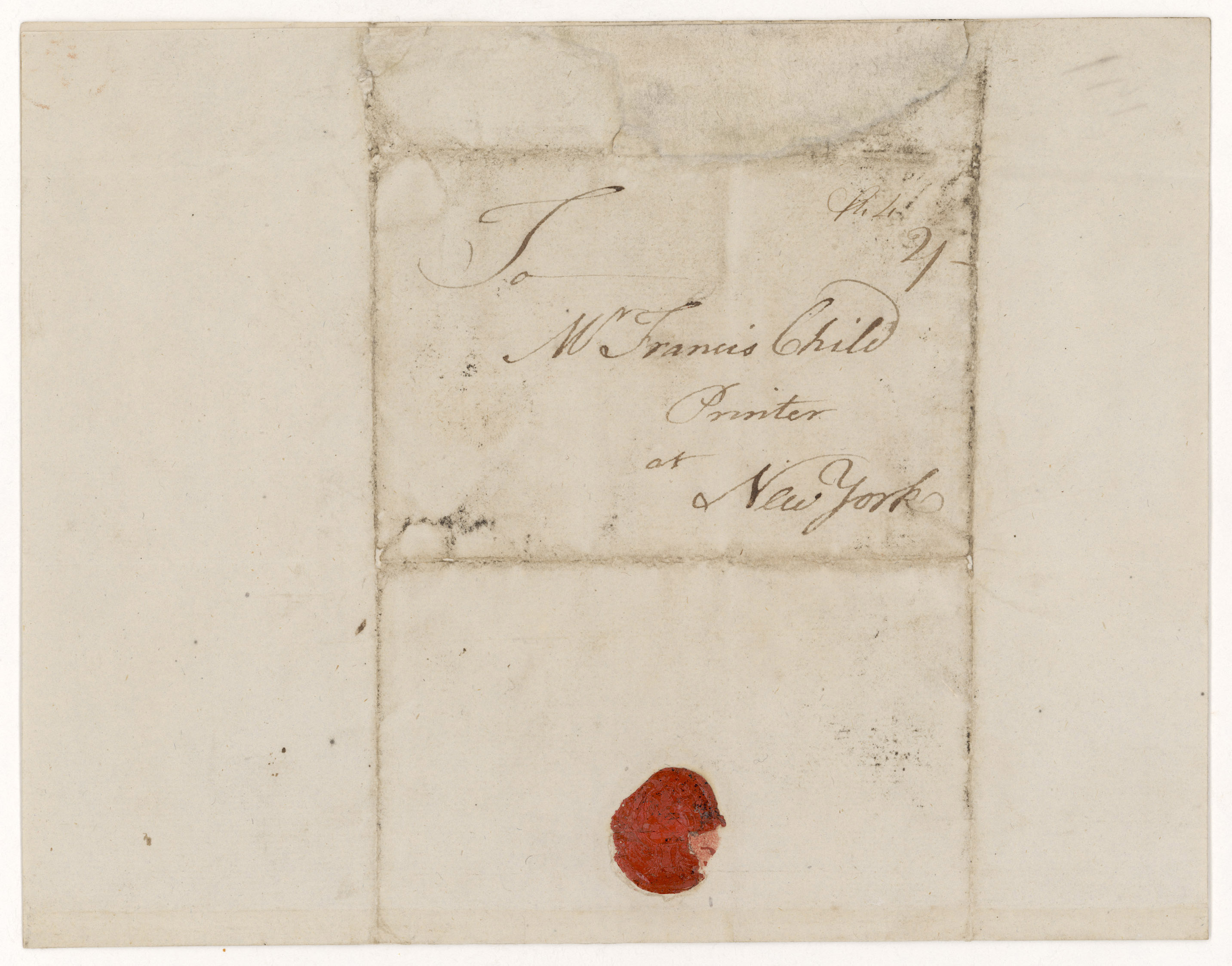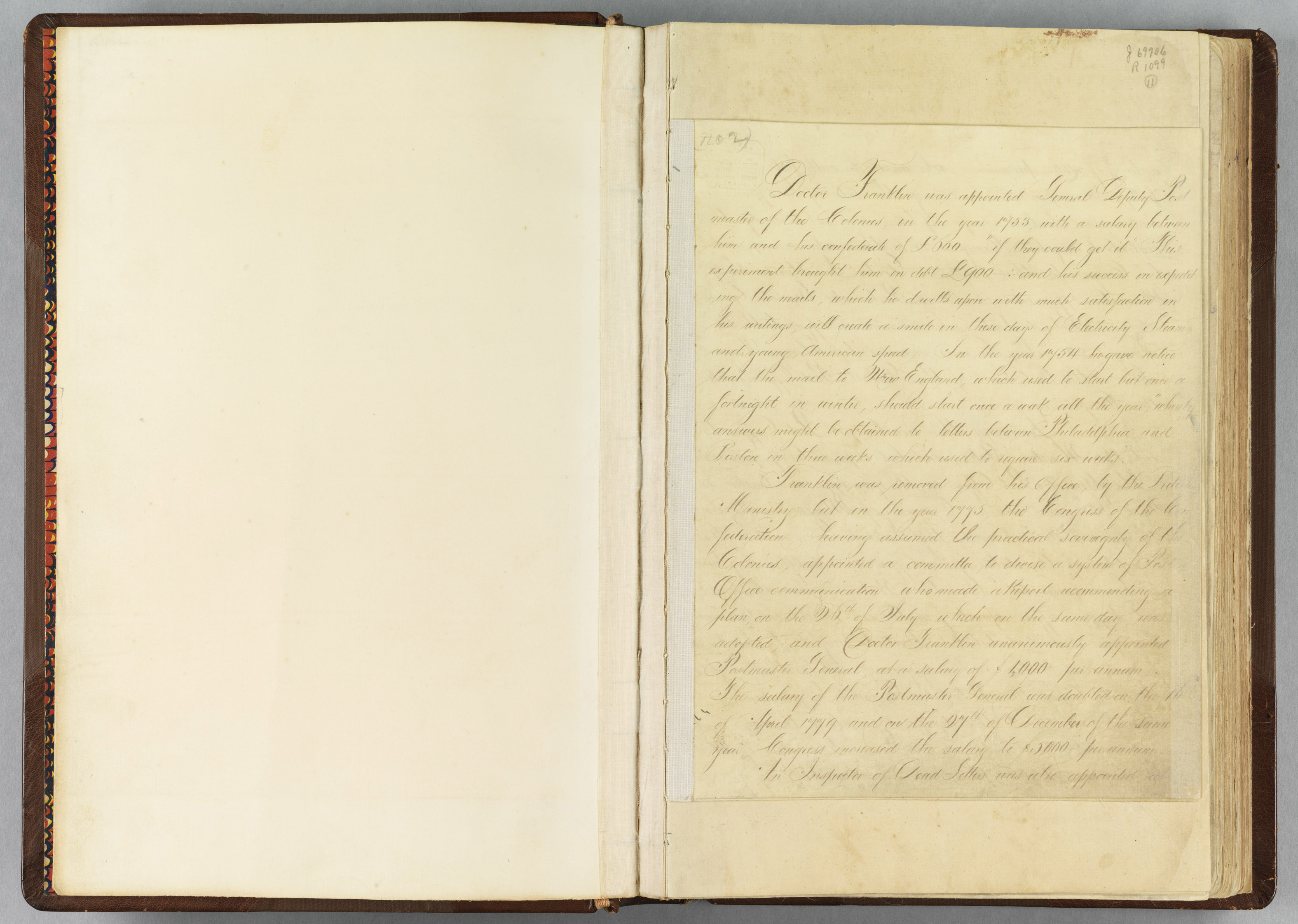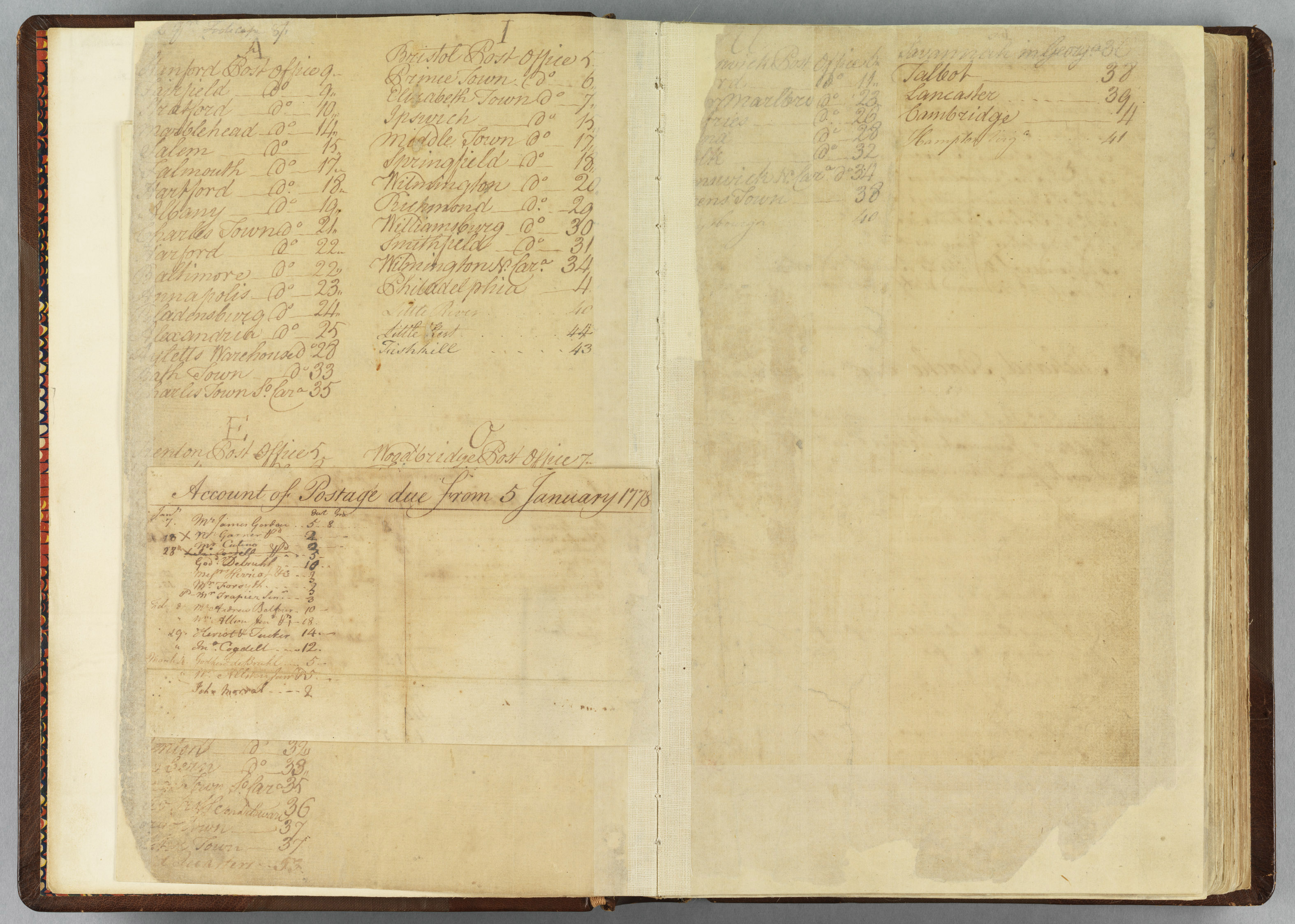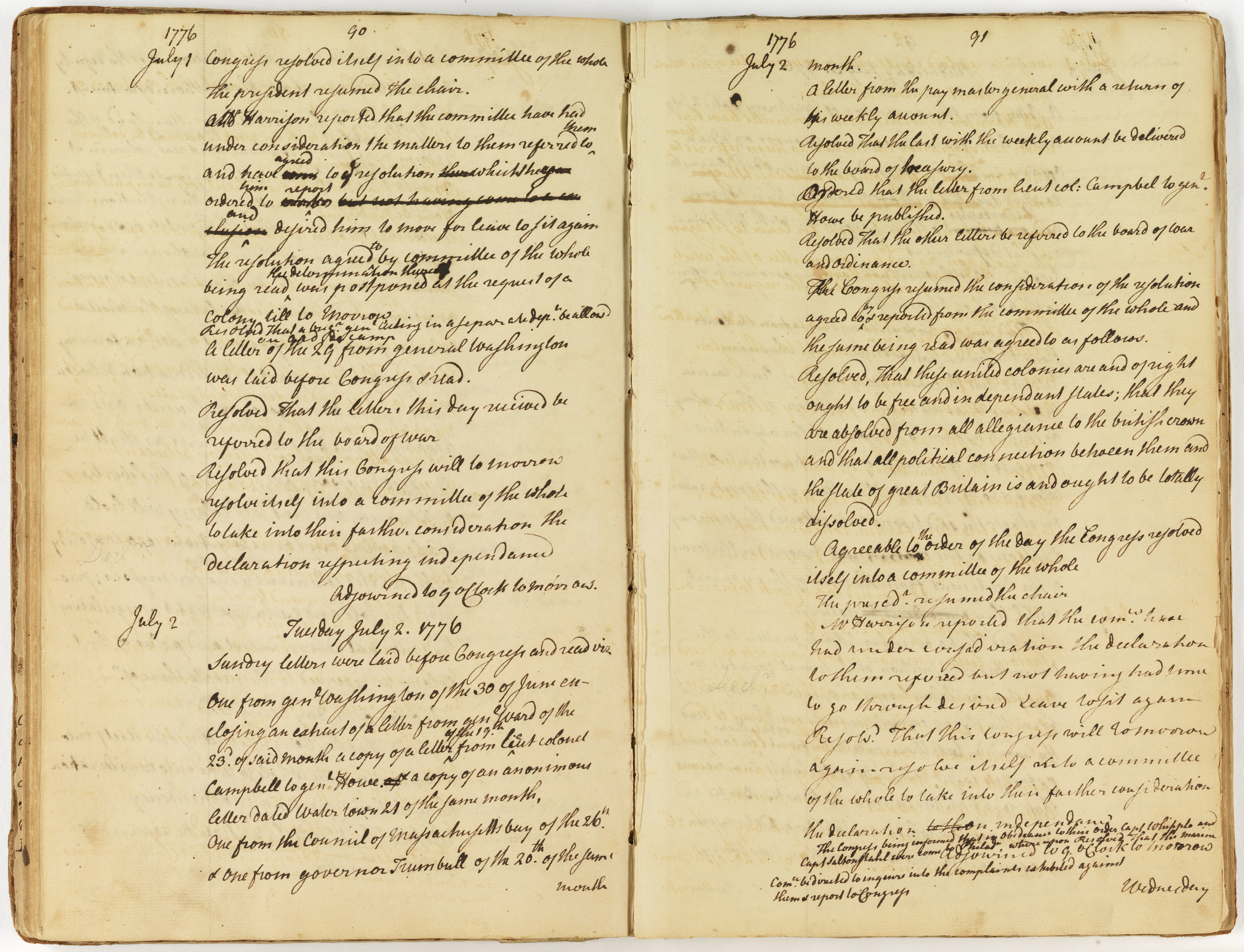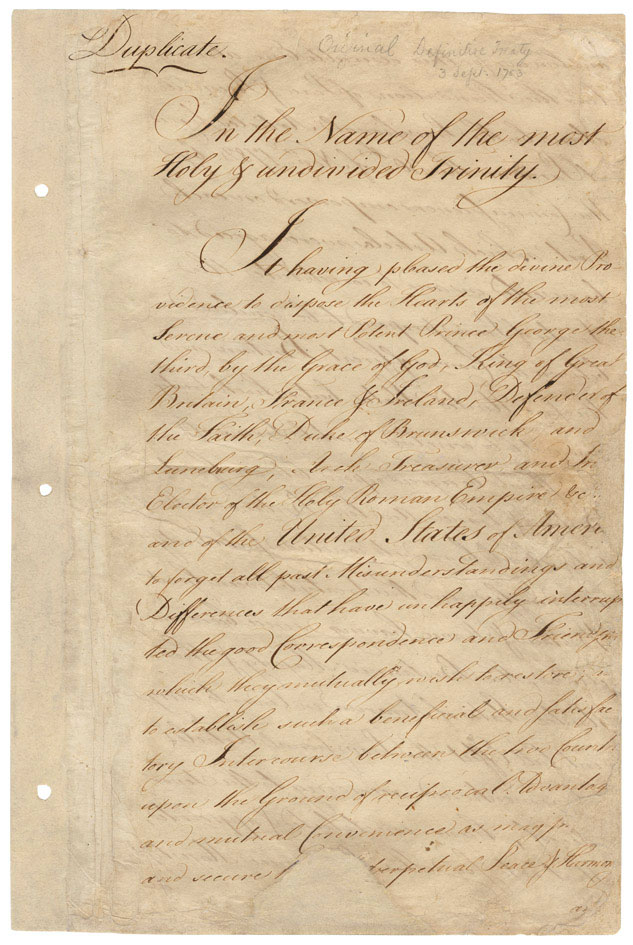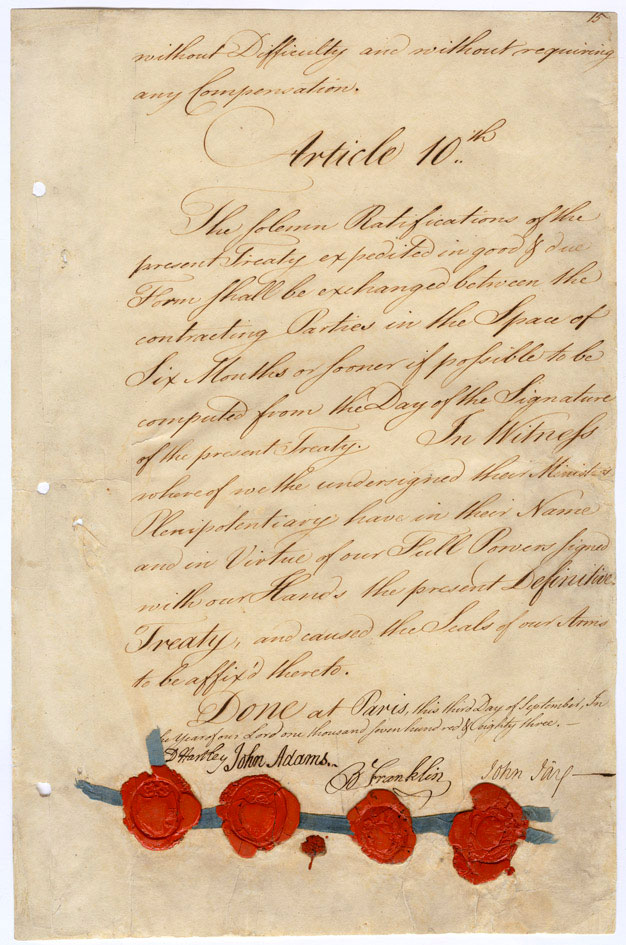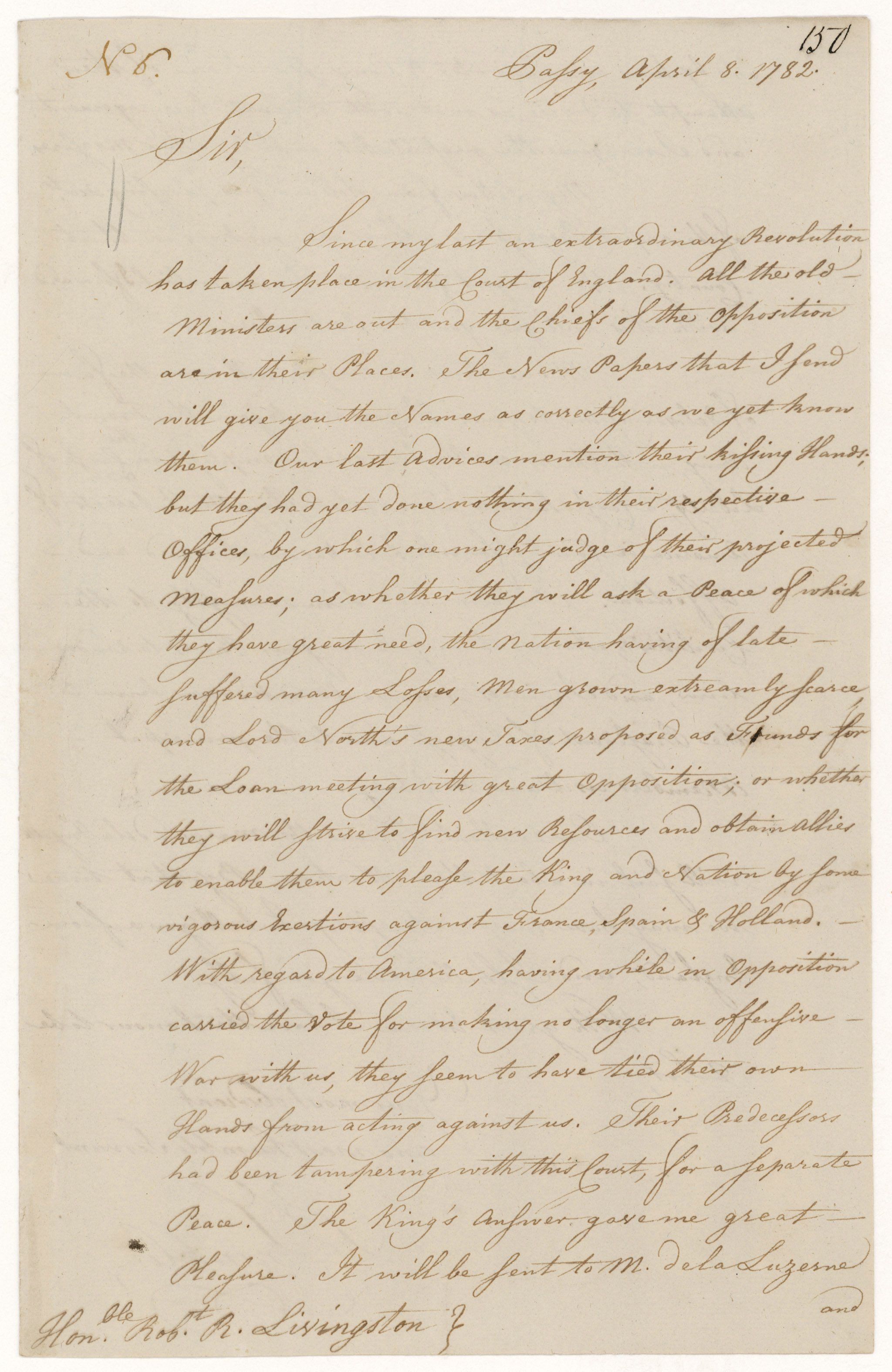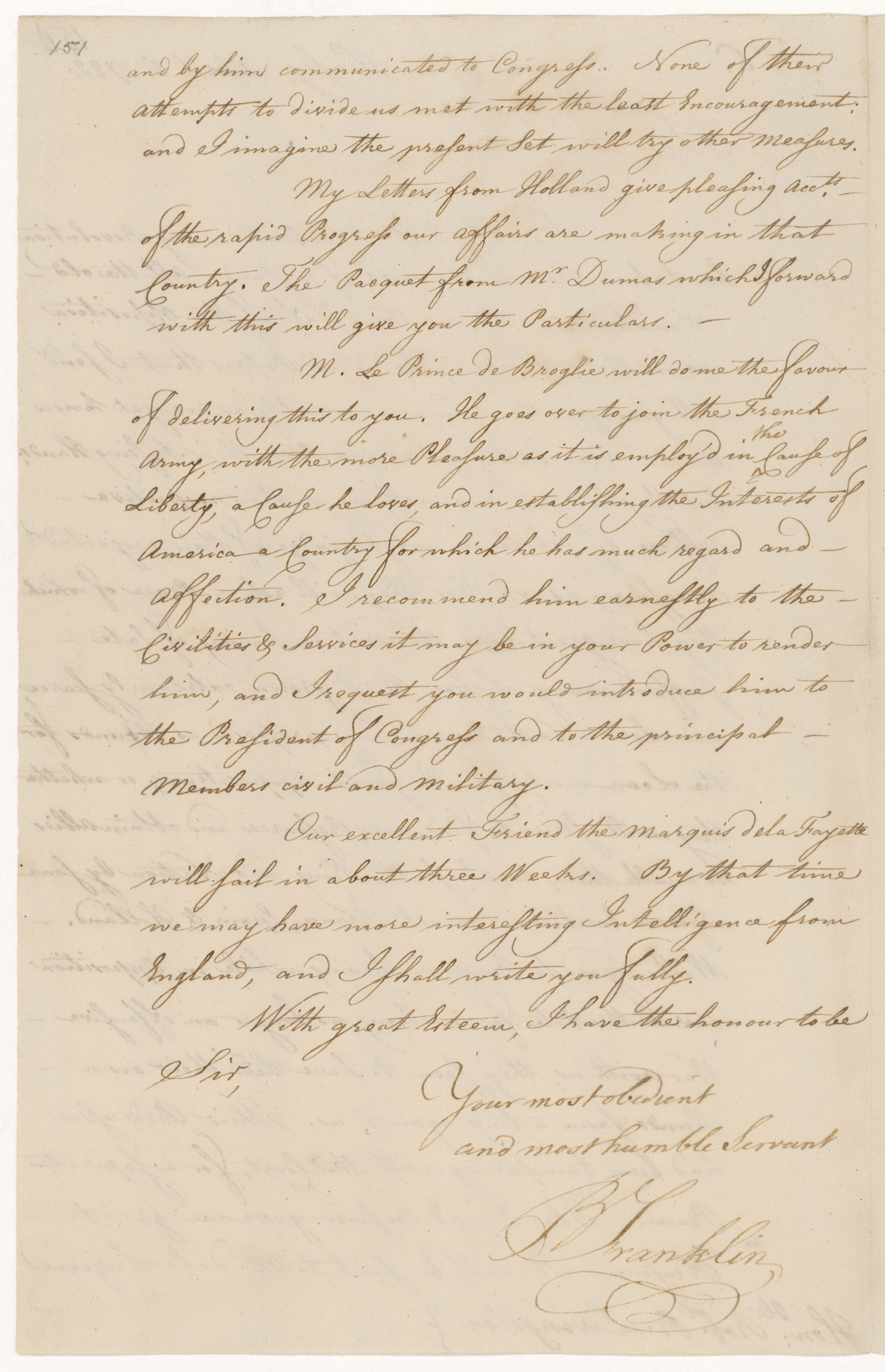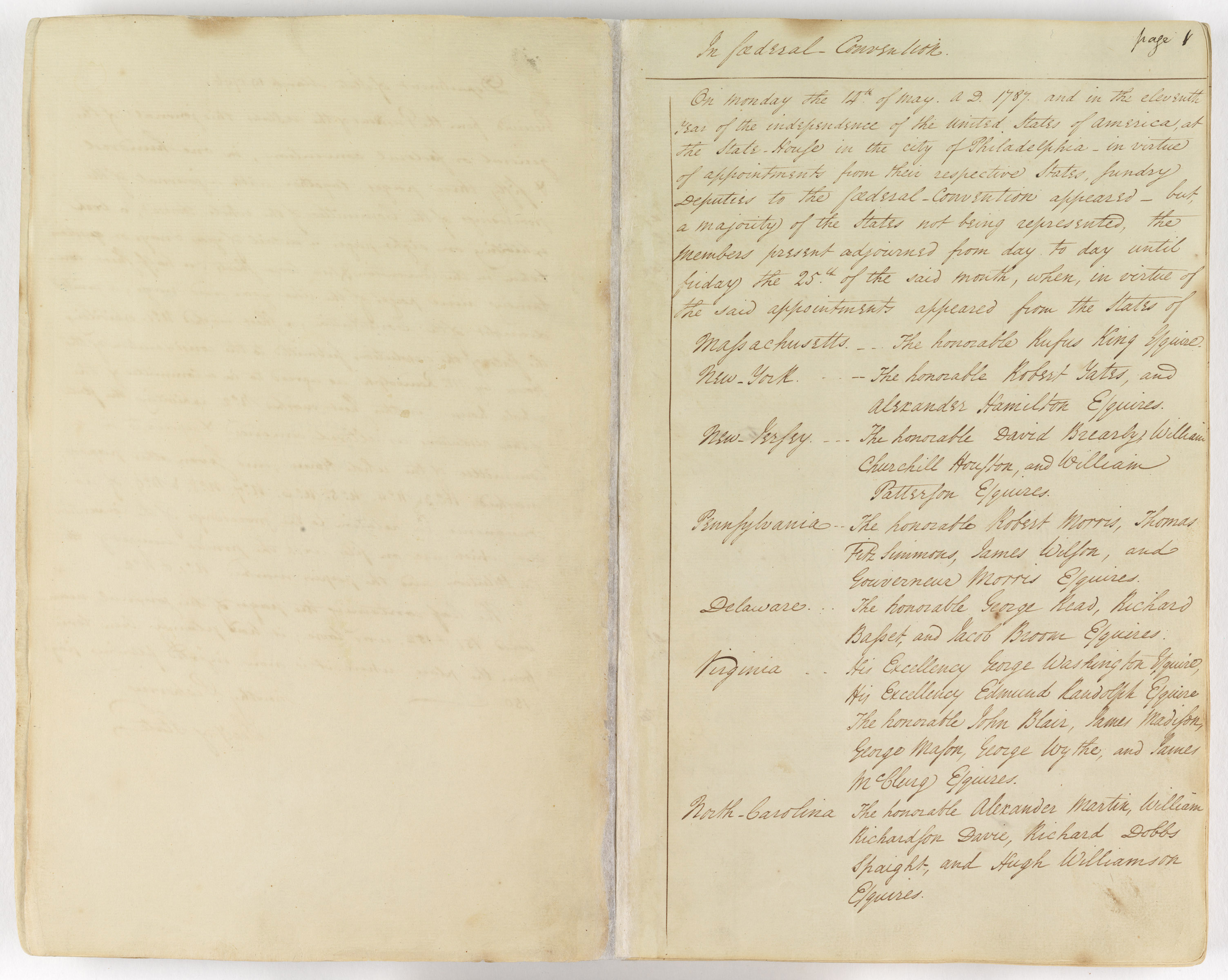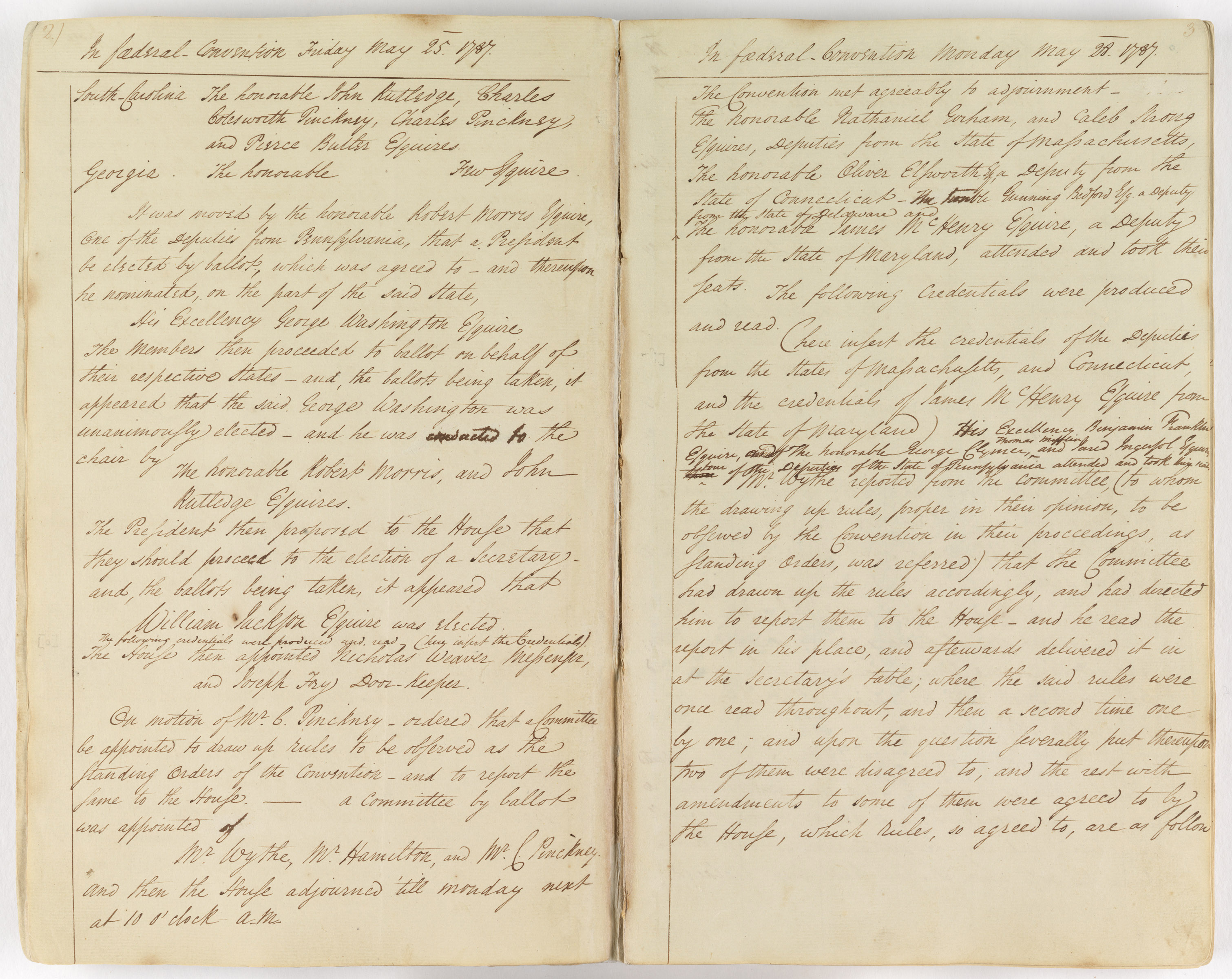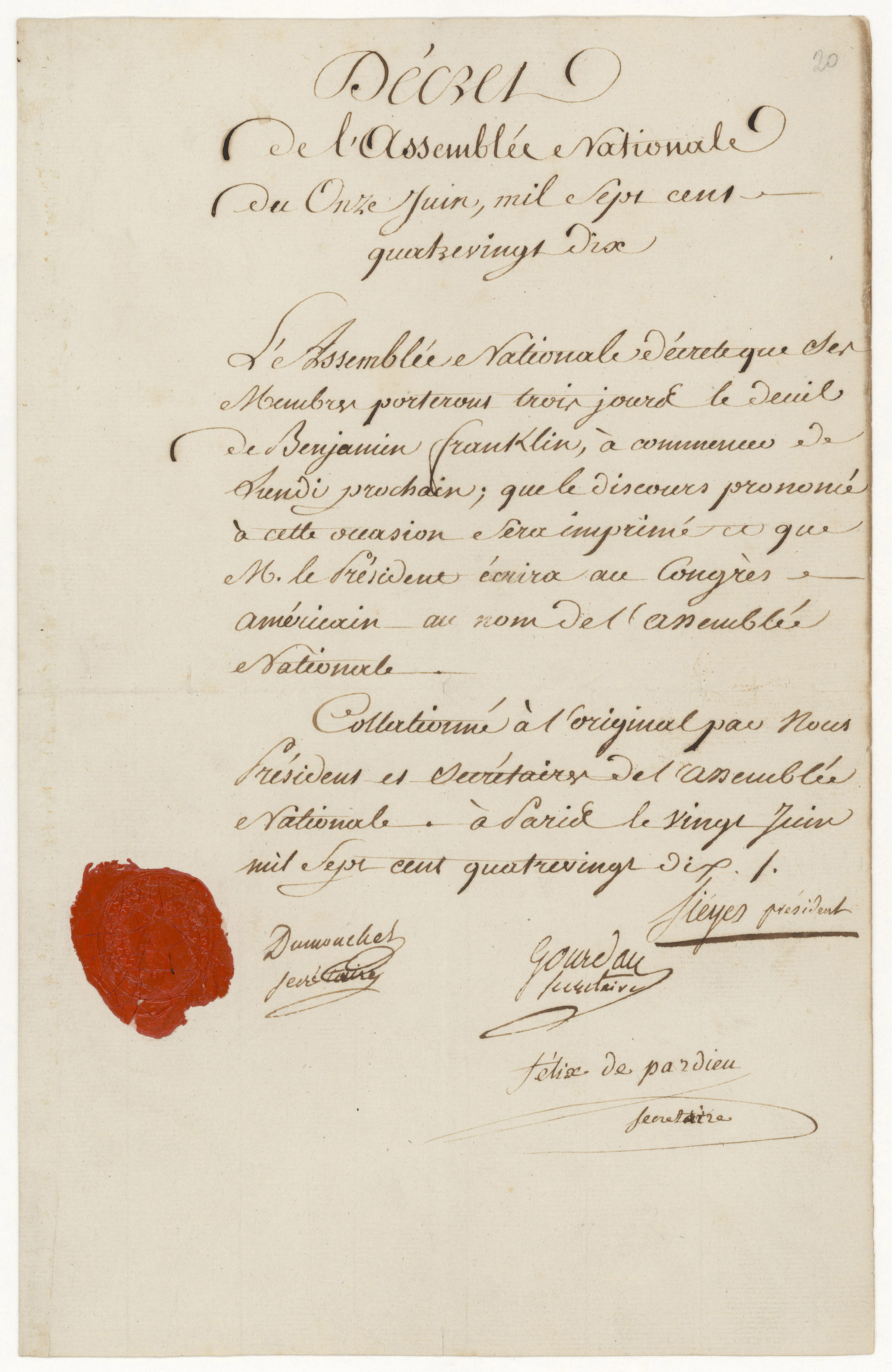
Press Kit: Benjamin Franklin: In Search of a Better World
National Archives documents included in the Benjamin Franklin exhibit
Case 1
Letter from Benjamin Franklin to Francis Child, February 8, 1785 [RED 15126]
Franklin expanded his already successful printing business by forming partnerships with “young printers of good character.” On February 8, 1785, Franklin wrote to Francis Child about forming such a business venture. Franklin would provide the necessary printing type and—if this agreement proved to be similar to earlier ones Franklin negotiated—receive a portion of Child’s profits. Through such agreements and other profitable ventures, Franklin became one of the wealthiest men in the country. National Archives, Records of the Continental and Confederation Congresses and the Constitutional Convention
Ledger of the General Post Office of the United States of America, August 1775 to October 1776 [RED 00524]
Benjamin Franklin had received a royal appointment as postmaster of Philadelphia in 1737. In 1753, the Crown appointed him as joint postmaster for the thirteen colonies. He served as Postmaster General of the Continental Congress from 1775 to 1776. The ledger shown here lists Post Office expenses on the left; moneys received are on the right. National Archives, Records of the Post Office Department
Case 2
Rough Journal of Continental Congress, June 11, 1776 – appt. of Franklin, Jefferson & Adams to draft Declaration of Independence [RED 06859]
On June 11, 1776, the second Continental Congress chose a committee of five delegates to “prepare a declaration of independency.” Serving along with Franklin were Thomas Jefferson, John Adams, Roger Sherman, and Robert R. Livingston. Franklin edited Jefferson’s initial draft, notably suggesting the phrase “We hold these truths to be self-evident.” Jefferson’s original had described these truths as “sacred and undeniable.” The committee submitted this draft to the Continental Congress, which made further alterations until arriving at the final version on July 4, 1776. National Archives, Records of the Continental and Confederation Congresses and the Constitutional Convention
Letter from Franklin to Secret Correspondence Committee, January 4, 1777 [RED 20559]
Franklin, Silas Deane, and Arthur Lee formed the American commission sent to Paris seeking French support of the Revolution. Franklin and his fellow diplomats met with the Comte de Vergennes, French foreign minister, and eventually with Louis XVI. The American diplomats were ultimately successful in negotiating French support, which proved vital in the revolutionary cause. In this letter, Franklin informed the Continental Congress of his arrival and early diplomatic progress. National Archives, Records of the Continental and Confederation Congresses and the Constitutional Convention
Case 3
Treaty of Paris, September 3, 1783 [RED 04590]
Signed on September 3, 1783, and ratified by the Continental Congress on January 14, 1784, the Treaty of Paris formally ended the Revolutionary War and established the United States as an independent and sovereign nation. Benjamin Franklin, John Adams, and John Jay negotiated the treaty for the United States. Franklin’s rather decorative signature accompanied those of his fellow negotiators on the document. National Archives, General Records of the United States Government
View the entire document in the National Archives Online Public Access system.
Case 4
Letter from Benjamin Franklin to Secretary of Foreign Affairs Robert Livingston, April 8, 1782 [RED 21197]
The surrender of Lord Cornwallis to George Washington and French forces on October 17, 1781, effectively ended the Revolutionary war. The subsequent collapse of Lord North’s government in London made peace all but certain. In this letter to Congress, Franklin noted this “extraordinary revolution” in British politics. Peace talks began once the new government headed by Lord Rockingham was in place. National Archives, Records of the Continental and Confederation Congresses and the Constitutional Convention
Journal of the Constitutional Convention, July 5, 1787 [RED 01025]
Although Franklin initially favored a single-house national legislature, during the Constitutional Convention, he ultimately accepted a two-house legislative model. The method of apportioning legislative representation remained highly contentious, however. Smaller states feared that representation based on population would leave them in a relatively weak position compared to their more populous neighbors. A committee, which included Franklin, worked out a compromise: representation in the House of Representatives would be based on a state’s population; in the Senate, each state would have an equal vote. National Archives, Records of the Continental and Confederation Congresses and the Constitutional Convention
Case 5
Decree of French National Assembly on the death of Franklin [RED 23133]
Franklin was widely popular in France, where he had lived from 1776 to 1785 as the chief U.S. diplomatic representative. After hearing of his death on April 17, 1790, the French National Assembly issued a decree that its members would observe three days of mourning. Further, the President of the Assembly would write to Congress informing it of the honor being paid to Franklin. National Archives, General Records of the Department of State
Printed version of the United States Constitution [RED 19191]
On September 17, 1787, the delegates to the Constitutional Convention completed their work and sent a signed parchment copy of the Constitution—along with hundreds of copies printed by John Dunlap and David Claypoole—to the Articles of Confederation Congress then meeting in New York. After further debate, the Confederation Congress sent the Constitution to the state legislatures, who would distribute them to ratifying conventions. The printed version shown here was printed on September 29, 1787, based on the type already set by the New York newspaper the Independent Journal. It was then placed in the Resolve Book of the Office for Foreign Affairs. National Archives, Records of the Continental and Confederation Congresses and the Constitutional Convention
